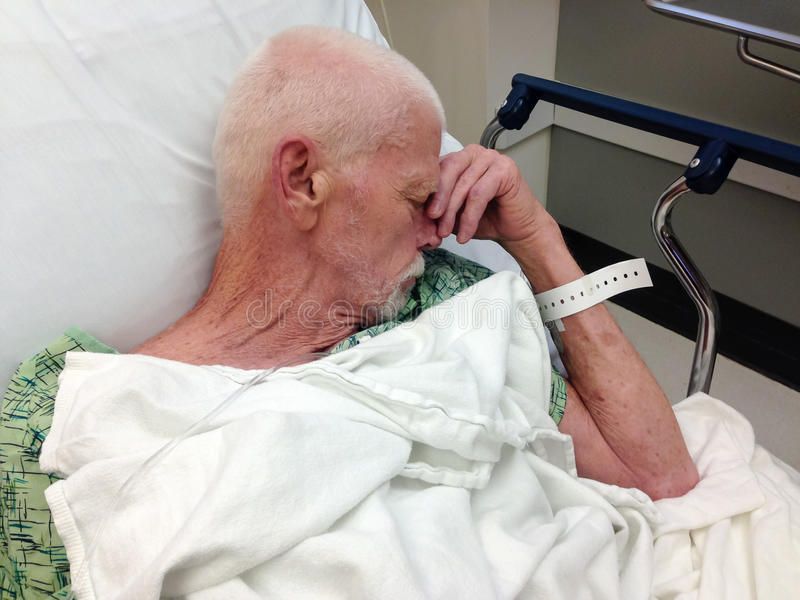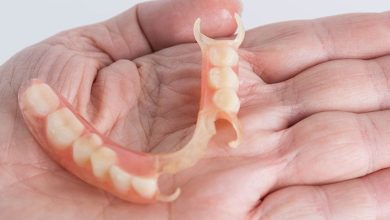Symptoms and Treatment of ischemic stroke

Table of Contents
What are the symptoms?
Specific symptoms of an ischemic stroke depend on what region of the brain is affected. Certain symptoms are common across most ischemic stroke, including:
- vision problems, such as blindness in one eye or double vision
- weakness or paralysis in your limbs, which may be on one or both sides, depending on the affected artery
- dizziness and vertigo
- confusion
- loss of coordination
- drooping of face on one side
Once symptoms start, it’s crucial to get treatment as quickly as possible. This makes it less likely that damage becomes permanent. If you think someone is having a stroke, evaluate them using FAST:
- Face. Is one side of their face drooping and hard to move?
- Arms. If they raise their arms, does one arm drift downward, or do they have significant difficulty raising their arm?
- Speech. Is their speech slurred or otherwise strange?
- Time. If the answer to any of these questions is yes, it’s time to call your local emergency services.
Even though TIA lasts for a brief period and usually resolves on its own, it also requires a doctor. This can be a warning sign of a full-blown ischemic stroke.
What causes ischemic stroke?
Ischemic stroke occurs when an artery that supplies blood to the brain is blocked by a blood clot or fatty buildup, called plaque. This blockage can appear at the neck or in the skull.
Clots usually start in the heart and travel through the circulatory system. A clot can break up on its own or become lodged in an artery. When it blocks a brain artery, the brain doesn’t get enough blood or oxygen, and cells start to die.
Ischemic stroke caused by a fatty buildup happens when plaque breaks off from an artery and travels to the brain. Plaque can also build up in the arteries that supply blood to the brain and narrow those arteries enough to cause ischemic stroke.
Global ischemia, which is a more severe type of ischemic stroke, happens when the flow of oxygen to the brain is greatly reduced or completely stopped. This is usually caused by a heart attack, but it can also be caused by other conditions or events, such as carbon monoxide poisoning.
What are the risk factors?
Circulatory conditions are the main risk factor for ischemic stroke. That’s because they increase your risk for clots or fatty deposits. These conditions include:
- high blood pressure
- atherosclerosis
- high cholesterol
- atrial fibrillation
- prior heart attack
- sickle cell anemia
- clotting disorders
- congenital heart defects
Other risk factors include:
- diabetes
- smoking
- being overweight, especially if you have a lot of abdominal fat
- heavy alcohol misuse
- use of certain drugs, such as cocaine or methamphetamines
Ischemic stroke is also more common in people who have a family history of stroke or who’ve had past strokes. Men are more likely than women to have ischemic stroke, while blacks have a higher risk than other races or ethnic groups. Risk also increases with age.
Treatment
Emergency treatment for stroke depends on whether you’re having an ischemic stroke or a stroke that involves bleeding into the brain (hemorrhagic).
Ischemic stroke
To treat an ischemic stroke, doctors must quickly restore blood flow to your brain. This may be done with:
- Emergency IV medication. Therapy with drugs that can break up a clot has to be given within 4.5 hours from when symptoms first started if given intravenously. The sooner these drugs are given, the better. Quick treatment not only improves your chances of survival but also may reduce complications.An IV injection of recombinant tissue plasminogen activator (tPA) — also called alteplase (Activase) — is the gold standard treatment for ischemic stroke. An injection of tPA is usually given through a vein in the arm with the first three hours. Sometimes, tPA can be given up to 4.5 hours after stroke symptoms started.
This drug restores blood flow by dissolving the blood clot causing your stroke. By quickly removing the cause of the stroke, it may help people recover more fully from a stroke. Your doctor will consider certain risks, such as potential bleeding in the brain, to determine if tPA is appropriate for you.
- Emergency endovascular procedures. Doctors sometimes treat ischemic strokes directly inside the blocked blood vessel. Endovascular therapy has been shown to significantly improve outcomes and reduce long-term disability after ischemic stroke. These procedures must be performed as soon as possible:
- Medications delivered directly to the brain. Doctors insert a long, thin tube (catheter) through an artery in your groin and thread it to your brain to deliver tPA directly where the stroke is happening. The time window for this treatment is somewhat longer than for injected tPA, but is still limited.
- Removing the clot with a stent retriever. Doctors can use a device attached to a catheter to directly remove the clot from the blocked blood vessel in your brain. This procedure is particularly beneficial for people with large clots that can’t be completely dissolved with tPA. This procedure is often performed in combination with injected tPA.
The time window when these procedures can be considered has been expanding due to newer imaging technology. Doctors may order perfusion imaging tests (done with CT or MRI) to help determine how likely it is that someone can benefit from endovascular therapy.
Other procedures
To decrease your risk of having another stroke or transient ischemic attack, your doctor may recommend a procedure to open up an artery that’s narrowed by plaque. Options vary depending on your situation, but include:
- Carotid endarterectomy. Carotid arteries are the blood vessels that run along each side of your neck, supplying your brain (carotid arteries) with blood. This surgery removes the plaque blocking a carotid artery, and may reduce your risk of ischemic stroke. A carotid endarterectomy also involves risks, especially for people with heart disease or other medical conditions.
- Angioplasty and stents. In an angioplasty, a surgeon threads a catheter to your carotid arteries through an artery in your groin. A balloon is then inflated to expand the narrowed artery. Then a stent can be inserted to support the opened artery.
Hemorrhagic stroke
Emergency treatment of hemorrhagic stroke focuses on controlling the bleeding and reducing pressure in your brain caused by the excess fluid. Treatment options include:
- Emergency measures. If you take blood-thinning medications to prevent blood clots, you may be given drugs or transfusions of blood products to counteract the blood thinners’ effects. You may also be given drugs to lower the pressure in your brain (intracranial pressure), lower your blood pressure, prevent spasms of your blood vessels and prevent seizures.
- Surgery. If the area of bleeding is large, your doctor may perform surgery to remove the blood and relieve pressure on your brain. Surgery may also be used to repair blood vessel problems associated with hemorrhagic strokes. Your doctor may recommend one of these procedures after a stroke or if an aneurysm, arteriovenous malformation (AVM) or other type of blood vessel problem caused your hemorrhagic stroke:
- Surgical clipping. A surgeon places a tiny clamp at the base of the aneurysm, to stop blood flow to it. This clamp can keep the aneurysm from bursting, or it can keep an aneurysm that has recently hemorrhaged from bleeding again.
- Coiling (endovascular embolization). Using a catheter inserted into an artery in your groin and guided to your brain, your surgeon will place tiny detachable coils into the aneurysm to fill it. This blocks blood flow into the aneurysm and causes blood to clot.
- Surgical AVM removal. Surgeons may remove a smaller AVM if it’s located in an accessible area of your brain. This eliminates the risk of rupture and lowers the risk of hemorrhagic stroke. However, it’s not always possible to remove an AVM if it’s located deep within the brain, it’s large, or its removal would cause too much of an impact on brain function.
- Stereotactic radiosurgery. Using multiple beams of highly focused radiation, stereotactic radiosurgery is an advanced minimally invasive treatment used to repair blood vessel malformations.
Stroke recovery and rehabilitation
After emergency treatment, you’ll be closely monitored for at least a day. After that, stroke care focuses on helping you recover as much function as possible and return to independent living. The impact of your stroke depends on the area of the brain involved and the amount of tissue damaged.
If your stroke affected the right side of your brain, your movement and sensation on the left side of your body may be affected. If your stroke damaged the brain tissue on the left side of your brain, your movement and sensation on the right side of your body may be affected. Brain damage to the left side of your brain may cause speech and language disorders.
Most stroke survivors go to a rehabilitation program. Your doctor will recommend the most rigorous therapy program you can handle based on your age, overall health and degree of disability from your stroke. Your doctor will take into consideration your lifestyle, interests and priorities, and the availability of family members or other caregivers.
Rehabilitation may begin before you leave the hospital. After discharge, you might continue your program in a rehabilitation unit of the same hospital, another rehabilitation unit or skilled nursing facility, as an outpatient, or at home.
Every person’s stroke recovery is different. Depending on your condition, your treatment team may include:
- Doctor trained in brain conditions (neurologist)
- Rehabilitation doctor (physiatrist)
- Rehabilitation nurse
- Dietitian
- Physical therapist
- Occupational therapist
- Recreational therapist
- Speech pathologist
- Social worker or case manager
- Psychologist or psychiatrist
- Chaplain
For any important information please contact us Email GadgetsNg info@gadgetsng.com
[Button id="1"]



